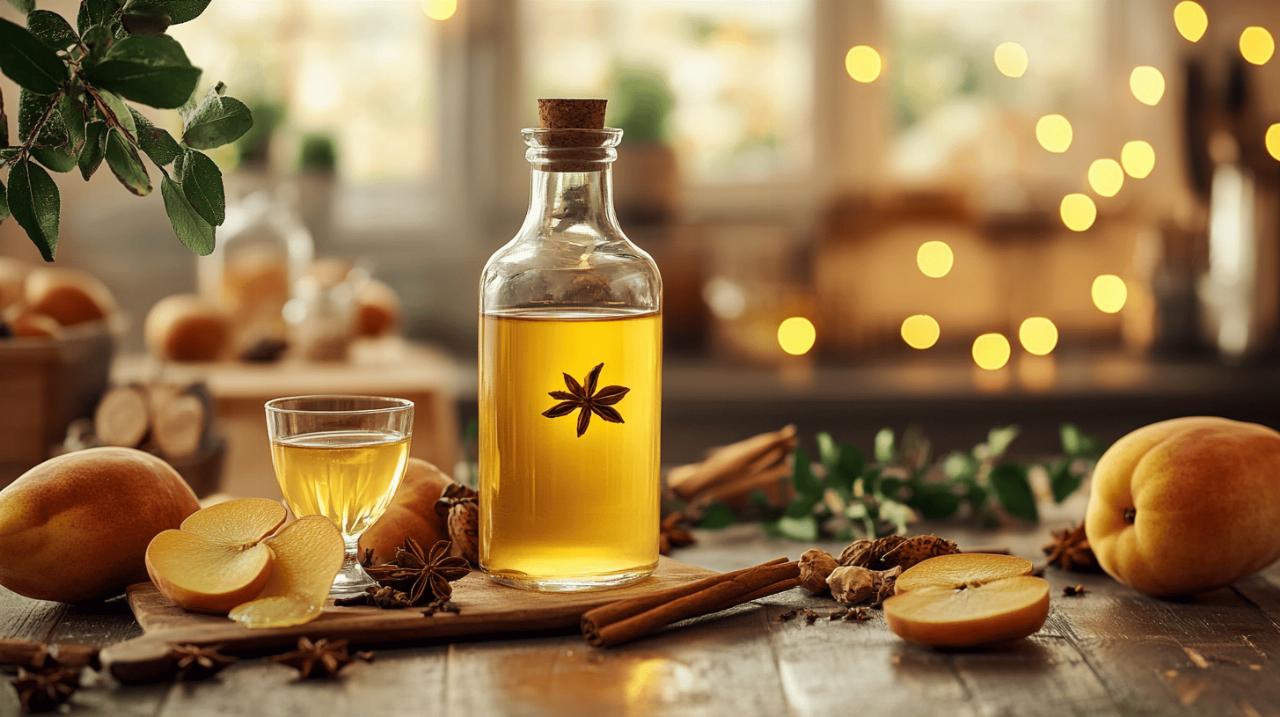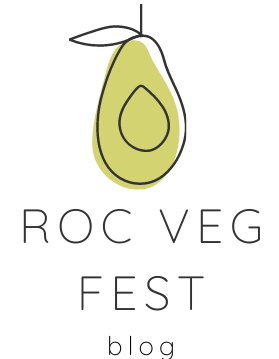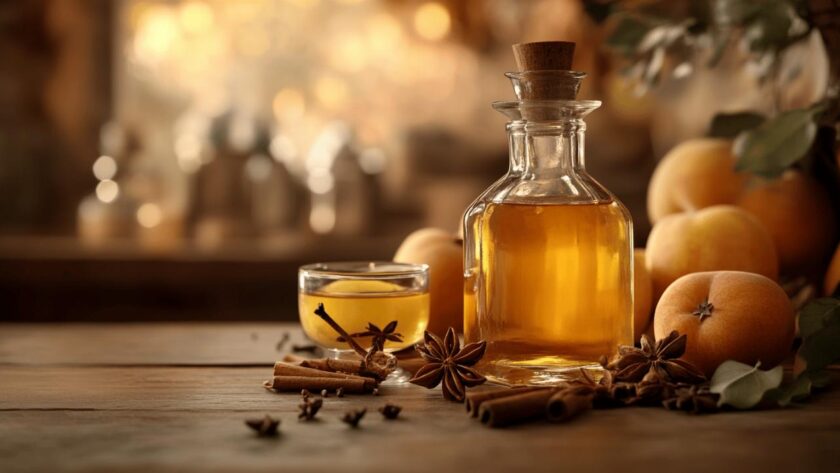Quince liqueur represents a delightful way to capture the essence of autumn in a bottle, transforming this ancient and fragrant fruit into a sophisticated spirit that brings warmth and character to any occasion. Though quinces may resemble somewhat misshapen apples and are far too astringent to eat raw, they reveal a remarkable sweetness and aromatic complexity when carefully infused with alcohol. This traditional method of preserving the harvest has been passed down through generations, with recipes appearing in classic cookbooks and family collections alike. Whether you're drawn to the challenge of working with an uncommon ingredient or simply wish to create something truly special for your home bar, making your own quince liqueur is a rewarding project that yields impressive results with surprisingly straightforward techniques.
Understanding Quinces: Selecting and Preparing the Perfect Fruit
Choosing the Right Quinces for Your Liqueur
The journey to exceptional homemade recipe begins with selecting the finest quinces you can find. These fruits typically ripen in late October, marking the peak of autumn harvest season. When shopping for quinces, look for specimens that emit a strong, pleasant fragrance, as this indicates proper ripeness. The fruit should feel firm to the touch, with a golden yellow colour that signals maturity. You'll want to acquire two to three large quinces for a standard batch, which will yield approximately two to three cups of prepared fruit, perfectly suited to a quart-sized preserving jar. Unlike many fruits that can be enjoyed straight from the tree, quinces remain tough and unpleasantly sour when raw, making them unsuitable for eating fresh. However, this very characteristic makes them ideal candidates for alcohol infusion, as the spirit draws out their hidden sweetness and distinctive floral notes over time. The pectin content within quinces contributes to their unique properties, though this same quality can sometimes cloud your final liqueur if not handled properly during preparation.
Proper washing, peeling and cutting techniques
Before you begin working with your quinces, proper preparation is essential to achieve the best flavour extraction. Start by washing the fruits thoroughly in hot, soapy water, as quinces often have a natural fuzzy coating that needs removing. Once cleaned, you face a choice in preparation methods that will influence both the appearance and flavour intensity of your final product. The traditional approach involves grating the quinces, which maximizes surface area contact with the spirit and promotes efficient flavour transfer. When grating, work quickly to prevent the flesh from browning upon exposure to air. Alternatively, you can slice the quinces thinly, taking care to remove all seeds and the tough pith surrounding them, as these parts can introduce unwanted bitterness. Whether you choose to grate or slice, the key is creating pieces that allow the vodka or brandy to penetrate thoroughly whilst remaining practical to pack into your chosen container. Each method has its advocates, though many experienced makers prefer grating for its superior infusion qualities despite the slightly more labour-intensive process.
Essential Ingredients and Equipment for Brilliant Quince Liqueur
What you'll need: spirit, sugar and flavourings
The beauty of quince liqueur lies in its simplicity, requiring just a handful of carefully selected ingredients to achieve professional results. Your choice of base spirit forms the foundation of the entire project. Vodka remains the most popular option due to its neutral character, which allows the delicate quince flavours to shine without competition. However, brandy serves as an excellent alternative for those seeking a richer, more complex profile with warming notes that complement the fruit beautifully. You'll need sufficient spirit to completely cover your prepared fruit within the container, ensuring proper preservation and extraction throughout the steeping time. Sugar plays a crucial role in balancing the natural tartness of quinces, with flexibility built into the recipe to suit personal preferences. Some makers prefer just a quarter cup for a drier liqueur, whilst others add up to two cups for a sweeter finish, though one cup typically strikes an agreeable middle ground. Rose petals offer an optional but highly recommended addition, contributing both a subtle pink hue and floral flavour that enhances the natural aromatics of the fruit. A cinnamon stick can also be included for those who fancy a warming spice note threading through the finished spirit. This combination of fragrant fruit, neutral spirit, and thoughtful flavourings creates a liqueur with genuine character and versatility.
The Best Vessels and Tools for the Job
Selecting appropriate equipment ensures smooth preparation and proper development of your infusion over the coming months. A quart-sized mason jar represents the ideal vessel for most home producers, offering the perfect capacity for a standard batch whilst providing an airtight seal essential for successful maceration. Any airtight container of similar size will serve equally well, provided it features a secure lid that prevents evaporation and contamination. Glass remains the preferred material as it neither reacts with alcohol nor imparts any unwanted flavours to your developing liqueur. For the filtering stage that comes later, you'll need coffee filters and a funnel, basic items that prove invaluable for achieving crystal-clear results. These simple tools remove fruit particles and sediment that would otherwise cloud your finished product. A reliable grater becomes essential if you've chosen that preparation method, whilst a sharp knife and cutting board serve those opting to slice their quinces. Beyond these basics, you'll appreciate having labels and additional bottles ready for when your liqueur reaches maturity, allowing proper documentation of production dates and efficient storage of your creation. The modest investment in proper equipment pays dividends throughout the process, making each stage more manageable and enjoyable.
The step-by-step method: creating your quince liqueur at home
Maceration process and timing guidelines
 Once your ingredients are assembled and your quinces prepared, the actual creation process follows a straightforward sequence that requires more patience than skill. Begin by packing your grated or sliced quinces into the sterilized jar, creating a compact base for the infusion. Add your measured sugar directly to the fruit, along with any rose petals or cinnamon stick you've chosen to include. These dry ingredients will begin drawing moisture from the fruit even before the spirit is added. Next, pour your vodka or brandy over the fruit mixture, ensuring every piece sits completely submerged beneath the liquid surface. This coverage is vital for preventing spoilage and ensuring even flavour extraction. Seal the container tightly and give it a gentle shake to distribute the ingredients. Find a cool dark place in your home where the jar can rest undisturbed, away from direct sunlight and temperature fluctuations. The minimum steeping time recommended is four weeks, though many producers find that two to three months infusion yields superior depth and complexity. During this period, visit your jar occasionally to give it a gentle shake, which helps redistribute the ingredients and promotes thorough extraction. As the weeks pass, you'll notice the liquid taking on a beautiful colour and the quinces gradually releasing their essence into the spirit. Patience during this stage ultimately determines the quality of your final product.
Once your ingredients are assembled and your quinces prepared, the actual creation process follows a straightforward sequence that requires more patience than skill. Begin by packing your grated or sliced quinces into the sterilized jar, creating a compact base for the infusion. Add your measured sugar directly to the fruit, along with any rose petals or cinnamon stick you've chosen to include. These dry ingredients will begin drawing moisture from the fruit even before the spirit is added. Next, pour your vodka or brandy over the fruit mixture, ensuring every piece sits completely submerged beneath the liquid surface. This coverage is vital for preventing spoilage and ensuring even flavour extraction. Seal the container tightly and give it a gentle shake to distribute the ingredients. Find a cool dark place in your home where the jar can rest undisturbed, away from direct sunlight and temperature fluctuations. The minimum steeping time recommended is four weeks, though many producers find that two to three months infusion yields superior depth and complexity. During this period, visit your jar occasionally to give it a gentle shake, which helps redistribute the ingredients and promotes thorough extraction. As the weeks pass, you'll notice the liquid taking on a beautiful colour and the quinces gradually releasing their essence into the spirit. Patience during this stage ultimately determines the quality of your final product.
Filtering, bottling and storage best practices
When your infusion has completed its maceration period, typically around December or January if you began with autumn fruit, the time arrives to transform your raw infusion into finished liqueur. The straining process requires careful attention to detail for achieving professional clarity. Pour the contents of your jar through coffee filters set in a funnel, working in batches if necessary to avoid overwhelming the filter. This method removes all fruit particles and sediment, leaving behind a clear, jewel-toned spirit. The discarded fruit needn't go to waste; consider adding additional sugar to these alcohol-soaked quinces to create a delicious quince syrup. After letting this mixture sit briefly, strain the resulting syrup and add it back to your filtered liqueur if you desire additional sweetness or body. Taste your liqueur at this stage and adjust the sugar content according to your preference, bearing in mind that flavours will continue to mellow slightly over the following weeks. Transfer the finished liqueur into clean bottles, preferably dark glass to protect from light degradation, and seal them properly. Store your bottled quince liqueur in a cool location away from direct sunlight, where it will maintain its quality for many months, if not years. The flavour often improves with additional aging, developing smoother, more integrated characteristics as the various elements harmonize.
Serving Suggestions and Uses for Your Homemade Quince Liqueur
Perfect pairings and cocktail recipes
Your beautifully crafted quince liqueur deserves thoughtful presentation that highlights its unique qualities and versatility. The simplest approach involves serving it neat in small glasses, allowing the pure expression of fruit and spirit to be appreciated without distraction. This method works particularly well after dinner, where the liqueur's gentle sweetness and warming character provide a satisfying conclusion to the meal. For those seeking something more elaborate, quince liqueur proves exceptionally compatible with warm drinks, bringing comfort during cold months. Try adding a generous measure to hot apple cider, where the complementary fruit flavours create a harmonious blend that feels both festive and restorative. The liqueur also shines in various cocktail ingredient applications, adding complexity to classic recipes or inspiring entirely new creations. Its floral notes and balanced sweetness make it suitable for mixing with sparkling wine, creating an elegant aperitif with sophistication and charm. Experimentation with different serving temperatures reveals additional dimensions; some enthusiasts prefer their quince liqueur slightly chilled, which emphasizes its crispness, whilst others enjoy it at room temperature to fully appreciate its aromatic qualities.
Culinary applications beyond the glass
The versatility of quince liqueur extends well beyond traditional drinking applications into the realm of creative cookery. As a flavouring agent, it brings distinctive character to both savoury dishes and sweet preparations, echoing the fruit's historical use in preserves and accompaniments. In savoury contexts, consider using a splash to deglaze pans when preparing game meats or pork, where the liqueur's fruity notes complement rich, robust flavours beautifully. It also adds interest to glazes and marinades, providing depth and a subtle sweetness that balances well with herbs and spices. For sweet applications, the possibilities multiply further. Drizzle quince liqueur over vanilla ice cream or panna cotta for an instant elevation of simple desserts. Incorporate it into cake batters or pastry creams, where it distributes its flavour throughout whilst contributing moisture. The liqueur works wonderfully in fruit compotes and poached fruit preparations, intensifying the overall fruit character whilst adding complexity. Bakers might brush it over sponge layers before assembling cakes, or use it to soak dried fruits for festive baking projects. This multipurpose nature makes your homemade quince liqueur not merely a beverage but a valuable ingredient that enhances your entire culinary repertoire, justifying the time invested in its creation many times over.

